The smell of the toilet: the causes and methods of
The smell of sewage from the toilet - a fairly common phenomenon, especially in the conditions of poor-quality utilities, which is the norm in our country. Waiting for help from regular plumbers can be infinite, and it is better to eliminate it yourself. We will tell how to remove the smell from the toilet without the help of workers of housing and communal services.

Common causes of unpleasant odors
Insufficient water flushing
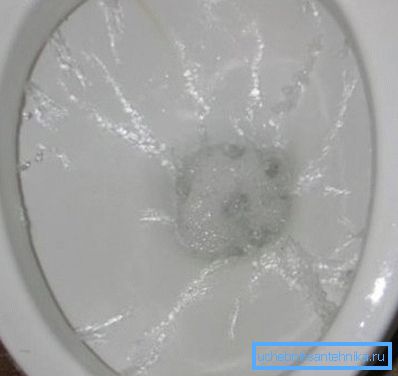
In the vast majority of modern apartments use the toilet-compact. This is a familiar model consisting of a bowl with a cistern fixed with a bowl of water to flush out the sewage. We will consider just such a variation.
One of the most common causes of "aromas" in the toilet is insufficient water flushing, as a result of which the fluid in the bowl is not completely replaced, and part of the fecal matter remains in the water. Of course, such a mixture will poison the air in the bathroom.
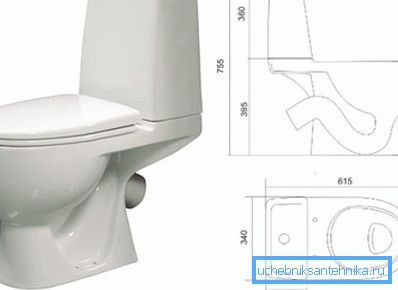
There are two possible reasons:
- A sewer blockage has occurred in a water seal or other drainage area.. This could occur due to various processes: deposits on the walls, ingress of foreign objects, frequent disposal of food waste with a high fat content, etc .;
- Drain mechanism tank does not work correctly. The mechanics of the float mechanism can be rebuilt so that when the key is pressed, not all of the water is drained, and a sufficient exchange of fluid does not occur.

In the first case, the output is obvious: it is necessary to clean the channels of the device and get rid of the congestion arising in them. To diagnose this damage is quite simple - when you wash the bowl, it is strongly filled with water, which goes slowly or not completely.
The first and most common way is to use a plunger. The hemisphere must be firmly pressed to the throat of the drain channel and carry out several sharp shocks. The resulting hydraulic shock creates significant pressure, which in most cases is enough to eliminate blockage.
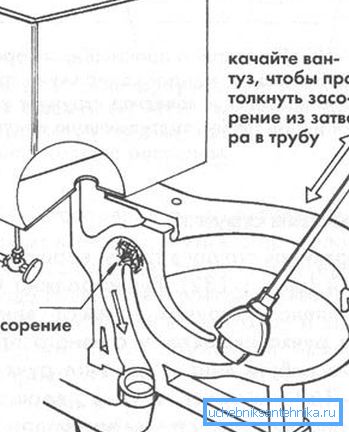
If this does not help, you can apply more radical measures: plumbing cable or chemical solvent to clean the pipes. The cable is a flexible steel cable, one end of which is equipped with a L-shaped handle, and the other has a sharp spiral tip. One end of the appliance is inserted into the toilet channel and pushed as far as it will go by turning the handle until the plug is punched or removed.
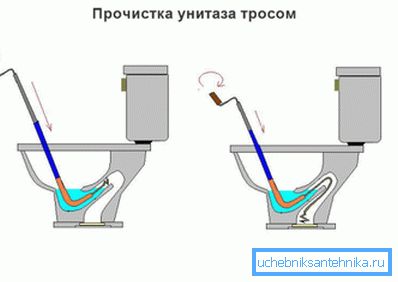
Chemicals can be bought in any department of household chemicals. Use the tool should be in accordance with the instructions that contains the manufacturer's instructions. Most often it is enough to pour the liquid into the toilet, and after a while just wash off the water.

Note! Modern chemicals are very effective, and their price is available to everyone. Therefore, there is no point in resorting to the “old-fashioned” methods: boiling water, soda, and other similar substances.
If the reason for the bad smell lies in the improper operation of the drain mechanism, then it should be configured more correctly. It is easy to determine this: open the lid of the tank when the noise accumulated after flushing has stopped. If the tank is not full - then the float is adjusted poorly.

It is necessary to study the design of the mechanism and configure it. In the simplest and most common form, it is enough just to slightly bend the boom of the float so that it blocks the flow of liquid in such a position that the tank is full, or find the adjustment screw and unscrew it a little.

Note! If the bar is not made of metal, do not try to bend it, otherwise you may break the mechanism. All modern models have an adjusting screw or lever.
Limescale or stone under the rim

The causes of the smell from the toilet are not limited to a bad flush. Often they are caused by various deposits under the rim and in other inconspicuous areas, which, under the action of bacteria, decompose and emit sharp unpleasant evaporation.
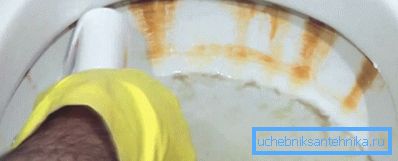
It is easy to eliminate them: the well-known "toilet duckling" is intended for this. Due to the shape of the neck, it allows easy access to the hidden areas of the structure and apply a special solvent to them, which decomposes deposits.
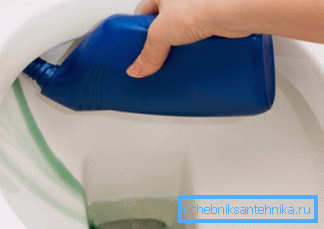
In the most difficult situations, you will have to eliminate the plaque with your hands with the help of gloves, rags and household acid solvent. It is unpleasant, but it is better to suffer one day rather than constantly suffer from the stench. However, you can use a special brush.
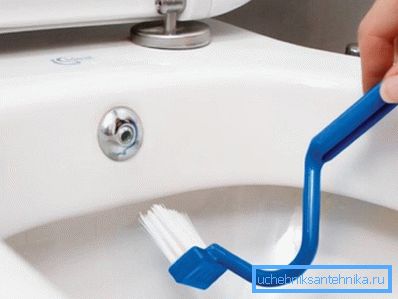
Note! Use tools specifically designed for stone removal: oxalic or acetic acid, mixtures from famous brands, etc. All sorts of alternative chemicals such as Coca-Cola is better to use for its intended purpose.
Other types of faults
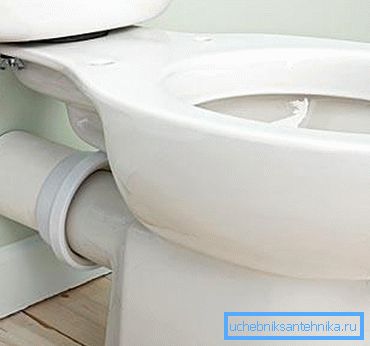
What to do with the smell of the toilet, if the standard methods did not help? There are options.
The reason for the stench can be:
- Depressurization of the sewer connection. This is caused by drying of the putty or aging of the rubber cuff. Exit - replacement of the cuff and processing compounds with silicone sealant;
- The connecting corrugation cracked or shifted. It is necessary to return the corrugation in place, and if it burst, replace it with a new one. Here it is also better to process the joint with a sealant;
- Disrupted water shutter. The reasons may be different: uneven installation of the device, blockage of the sewer riser pipe, blockage of the general sewage system or unsuccessful construction of the valve. The sewage pipe can be cleaned with boiling water, the valve replaced, but the elimination of blockages in the sewer riser is the task of public utilities.
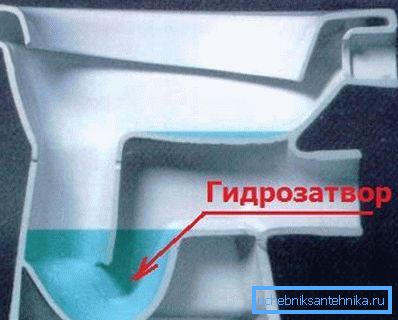
A funnel overlooks the roof or attic of the house. It is necessary so that when the drain mass of water moves in the riser, there is no negative pressure, under the action of which the liquid from the water seal can be sucked into the riser. The pipe may freeze or clog with snow; a bucket of warm water is sufficient for cleaning.

If the riser is clogged from below, then when draining, the water flow acts as a piston, creating an increased pressure underneath, which can squeeze out the gas through the gate with a characteristic surge. If gurgling sounds are heard in the toilet, it is immediately clear why the toilet smells of sewage: the drain pipe is clogged from below.
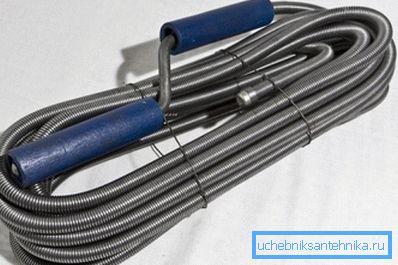
Note! Fully discarding utility bills are not worth it, they just wait for it. Call, call, complain, but do not use it yourself.
Conclusion
You can eliminate the unpleasant odor in the toilet room by yourself. Most often, the reason is in your apartment, and the video in this article will help you do the job of correcting it correctly.